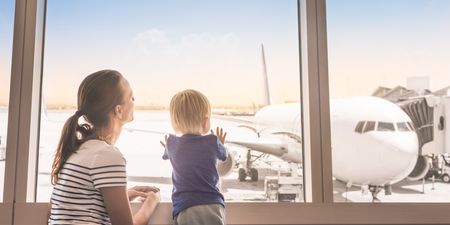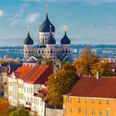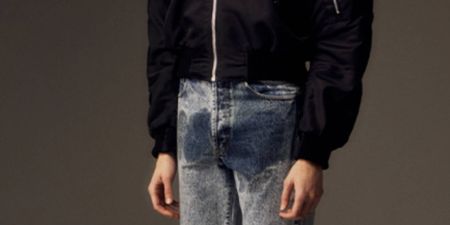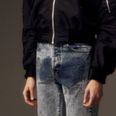As any person living in Ireland for the last years will attest, multi-culturalism can be a good thing, and occasionally a very, very good thing. After Poland’s accession to the EU in 2004, Ireland opened its borders and welcomed thousands of Polish workers, under one strict, unspoken rule – no fat birds.
The Poles’ current status as second highest ethnic minority in Ireland has brought a wave of change to the country – from short-cropped haircuts, a distrust of vowels and more importantly, a legion of blonde-haired, sharp-cheekboned Polish ice-maidens. We are forever grateful.
It is important however, to remember that there are even more, potentially more attractive Polish women out there, in their homeland, waiting to be regaled on the joys of Supermacs, spuds and the Airtricity League. We’ve carefully selected Kraków as our destination of choice in fair Poland as it provides a mixture of historical sites, immense pub crawls and uniformly shaved heads.
1. Kraków was the Royal Capital of Poland.
Kraków’s tourist board website is a little mad, stating that the city is “wrapped in legend, where time flows differently and where every moment becomes a moment in history” – we’re not sure about the second point but it certainly is wrapped in legend. Kraków was the Royal Capital of Poland from 1038 to 1596 and also has a UNESCO World Heritage rating of IV, a formidable find if you and a friend are playing UNESCO Top Trumps.

Wawel Royal Castle – pretty sweet digs
Krakow’s Wawel Royal Castle is a hugely popular destination to this day, as it was home to three dynasties of Poland’s monarchy. Today you can view the Castle for yourself, and the stately décor, priceless antiques and rare artifacts contained inside. It actually was Polish King Sigismund III Vasa that eventually passed on Kraków’s royal capital status to Warsaw in 1596, inadvertedley setting up a heated future football rivalry in the process (see no.5).
2. Visit Auschwitz for the mother of all downers.
Until Crocs were invented, the Holocaust was universally considered the worst act in the history of humankind. Located 60km outside of Kraków (direct bus lines are provided), the Auschwitz Concentration Camp is a sobering visit for any tourist. It’s tough to imagine but Polish Jews, homosexuals, gypsies and Soviet undesirables would have all taken the same bus trip as yourself, never to return.
Nowadays Auschwitz is a state museum and contains videos of life during the Holocaust and harrowing displays such as prisoner’s hair collected by the Nazi’s or likewise, prisoner’s shoes and suitcases. The original gas chambers are also open to visitors. In all, Auschwitz is an unforgettable experience for any visitor, though clearly not the most pleasant.
3. Krakow Main Square has more pubs per square mile than anywhere on Earth.
Say what? Yes, Kraków’s Main Market Square is littered with all-nighter pubs and bins to urinate inside. Unlike our own draconian laws, Polish people like to rock and roll all night and party every day, due to their substantially less strict drinking laws, allowing you to venture out into nearly any pub at any time if you’ve got the cash. If its pub crawls you’re after, no-one does it quite like Kraków. A forgettable experience, for all the right reasons.
4. View the site of a real dragon-slaying.
Legend (okay, awesome legend) has it that Kraków was founded by a young dragon-slaying Prince called Krak, who thwarted the dragon that had supposedly lived in a massive cavern on Wawel Hill, and had terrorized the local population. It is unclear whether the “Ow†part of “Kraków†stems from the noise the poor dragon made whilst being battered by the heroic Krak but either way, you can visit the Wawel Hill caverns yourself to investigate this obviously true story. Inside the hill you can find a large, six-legged metal sculpture of the dragon (which we’ve renamed Tim), which spews fire every five minutes, much to the delight of visitors.

How could you Krak?
It is also possible that name “Kraków†is derived from an archaic possessive form of “Krakâ€, meaning “Krak’s town†– but we prefer the story with the dragon.
5. Their football team HATE’S Warsaw’s team.
As we’ve already discussed, Sigismund III Vasa was a Warsaw-loving fanny with rubbish dress-sense. By handing over Kraków’s rightful seat as the Royal Capital of Poland, he left disheartened Krakówians with no choice other than to show their disgust by forming a football club, centuries later.
Today Wisla Kraków is the most dominant Polish side of the last decade, having won six of the last ten domestic league titles. Their most fierce rival, however, is the Warsaw-based Legia Waszawa, with each match dubbed “Poland’s Derby”. Naturally, Wisla are by far the most superior team, holding the all-time European record for home games in a row without a loss, which lasted six years until 2006 and came to 73 ties. We recommend taking in a probable home victory at “Poland’s Derby” and soaking up the bitter centuries-old rivalry in the universal language of football.
6. Do you love salt mines? You’re in luck.
The Wieliczka Salt Mines are one of the world’s oldest operating salt mines and today are both a huge tourist destination and UNESCO World Heritage Site. The mine itself is over 300km long and has been worked on for over 900 years.
In its heyday the Wieliczka mines were some of world’s biggest and most profitable industrial establishments but now are used for entertaining the 1.2m tourists the visit the site annually. Filled with beautiful salt sculptures, underground lakes and giant caverns, the subterranean world of these medieval mines are a must for any self-respecting history buff. Sadly, unlike Paris’ own historical Louvre Museum site, there are no McDonald’s at all at the Wieliczka Mines if you’re feeling a bit peckish – a missed opportunity.

Mmm, salty
7. They’ve got an aviation museum.
Located on a historic Polish air-field, the Polish Aviation Museum holds over a hundred aircrafts, including pre-war Polish fighter-planes to German Albatrosses and Soviet Kakaruzniks. If you love planes then there’s no excuse not to pay a visit as Kraków’s museum is fully equipped with a wide variety of some of the most fascinating and important aircraft of the last 100 years. It’s difficult to reach from Kraków’s centre but for the purists out there it should be unmissable.
8. Our guy played their guy in a movie.
Liam Neeson is pretty much the go-to guy when you need a heroic historic figure from a nation’s history. He’s played Michael Collins for us, he might be playing Abe Lincoln for the Yanks, and in 1994 he played Oskar Schindler in Steven Spielberg’s acclaimed Schindler’s List.
German Industrialist Schindler is thought to have saved the lives of over 1,100 Jews that worked at his Kraków factory and today the site is preserved as a modern museum. The museum itself was only recently opened in June 2010 after years of development and features 30 interactive media stands, 15 video projectors and over 100 loudspeakers, all through a much more inclusive hiring policy.
9. Get a real Polish haircut.*
Many Irish people wonder why Polish men have such short-cropped haircuts, never growing their hair any longer than a shaved 1†blade. The reason for this is quite interesting – and dates back from 1952-1990, when the country was known as the People’s Republic of Poland, a Communist state.
Much like any Communist state, the People’s Republic operated under a controlled market economy, and any luxuries such as 2†blades, hair gel or scissors were banned amongst Polish men, who each took identical shaved haircuts. Following the collapse of Communist rule in Easter Europe in the early 90s, Polish men were free to express their individuality with longer, more creative hairstyles. Fearing uneasy stares and public ridicule (“that looks gay”) from their contemporaries in the preceding weeks, the Polish government felt much happier by enacting a law to keep all men’s haircuts as sensible as they ever were. Male citizens are now required to have their hair re-shaved every fortnight or face having their hair forcefully cut to a 1/2″ blade instead – the ultimate insult.

The Cathedral has a massive bell, and no – you can’t have a go
10. The Wawel Cathedral will make you say “Wawaweewah”.
The Wawel Cathedral is a historic Gothic church that was originally built in the 11th century. It was then destroyed and re-built a century later. And… well it was accidently burnt to the ground in the 14th century too. But who cares, look at it now – a shining example of Gothic architecture and rich in Polish history. Pope John Paul II (best Pope ever), the Polish pope who became the first non-Italian of his kind in 455 years, also gave his first Mass as a priest at the Wawel in 1946.
For visitors these days, the most appealing features of the Wawel Cathedral is the church’s crypt, which houses the tombs of over 15 Polish kings, 2 Polish saints and numerous Polish revolutionaries and national heroes. Pope John Paul II however, is buried under St. Peter’s Basilica – spoilsports.
*This may be a slight exaggeration apparently.
Our recommendations for your Kraków accomodation:
If money is no object – we recommend the Hotel Stary, a luxury hotel at a prime location in Krakow Centre. Take a closer look at http://www.stary.hotel.com.pl/
With a little cash to splash – The Red Brick Apartments are a 5 minute walk from the Krakow Market Square and provide splendid lodgings with affordable rents. The Red Brick website can be found at http://www.redbrick.pl/en/
On a budget – The Sodispar Service Apartments are situated 15 minutes from Krakow’s main areas but offer an interesting option – staying for a week or month in surprisingly comfy apartments. Have a look at their Sodispar website http://www.redbrick.pl/en/
LISTEN: You Must Be Jokin’ with Aideen McQueen – Faith healers, Coolock craic and Gigging as Gaeilge





















































